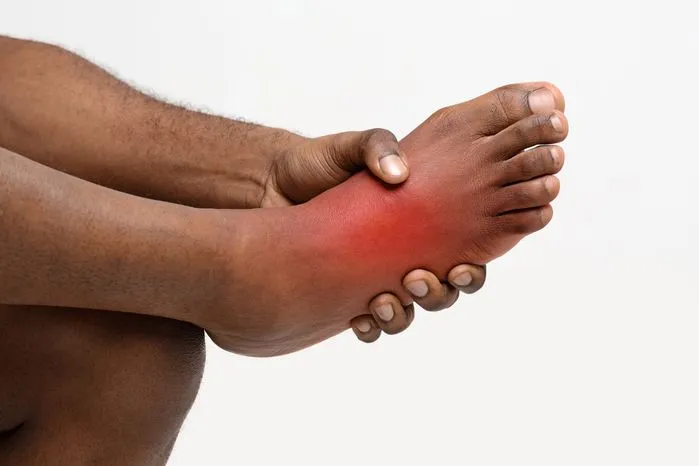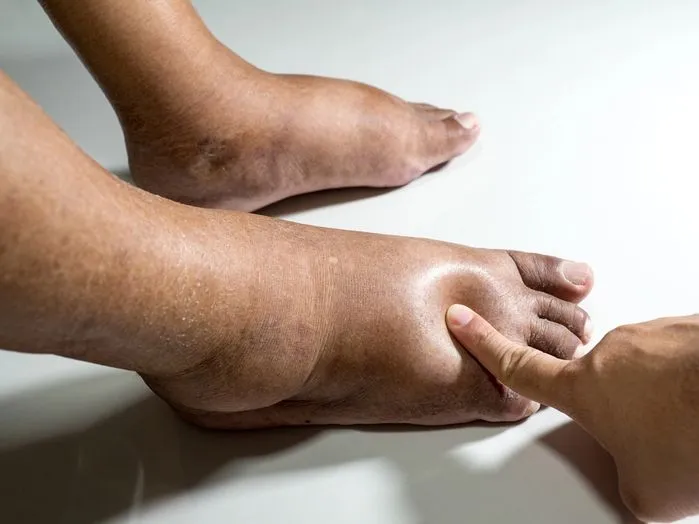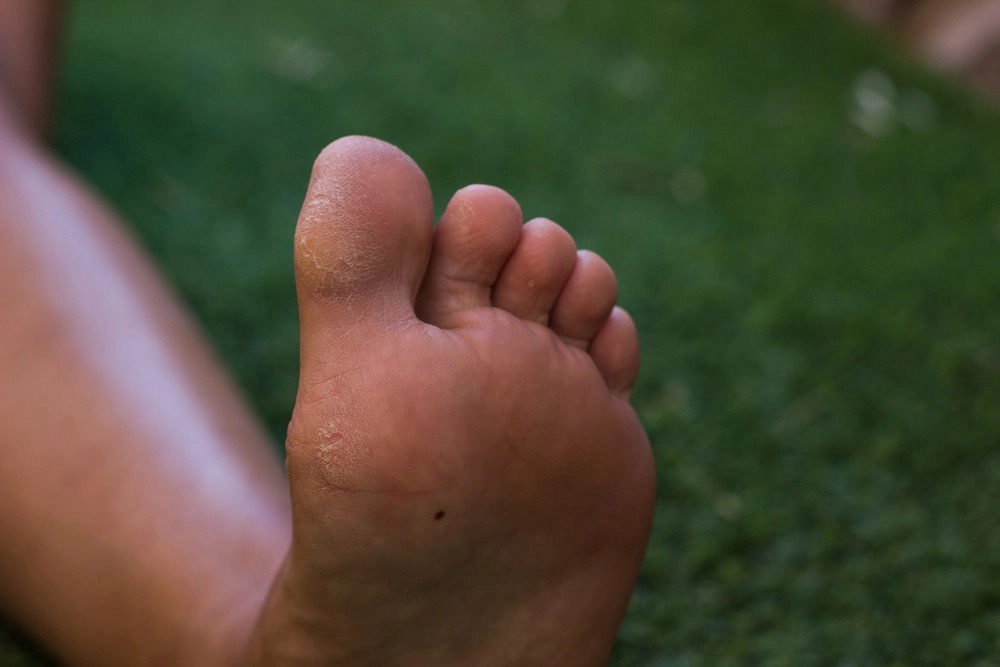
At RelefordInstitute.com, we’ve seen firsthand how cold, sweaty feet can disrupt more than comfort—it can signal complex underlying conditions that often go undiagnosed. Based on years of treating patients with this confusing condition, we know that cold, clammy feet aren’t just a surface-level concern—they can be early warning signs of vascular dysfunction, stress responses, or even metabolic disorders. That’s why we created this guide: to share our medically informed approach to help you understand this condition.
Top Takeaways
1. Cold, sweaty feet are a symptom.
- They often point to hyperhidrosis, poor circulation, or nervous system issues, not just temperature sensitivity.
2. This condition is complex.
- Triggers are also often overlooked or misdiagnosed.
3. Accurate diagnosis is key.
Common tests include:
- Starch-iodine test
- Thermoregulatory sweat test
- Physical exam and symptom history
4. Treatment should be personalized.
Options may include:
- Oral or topical medications
- Botox injections
- Lifestyle changes (diet, hydration, footwear)
5. RelefordInstitute.com takes a root-cause approach.
We focus on:
- Whole-body analysis
- Individualized care plans
- Long-term, sustainable relief
Understanding Hyperhidrosis
Hyperhidrosis, a common medical issue related to perspiration, is often misunderstood. This condition is marked by sweat production to an extent that disrupts daily activities and brings about discomfort. It may affect any area of the body but commonly targets hands, feet, underarms, or face.
Body's natural response to heat or physical exertion acts as one of the primary triggers for hyperhidrosis. Emotional factors can also set off this condition, making it multifaceted. Not only does it involve physical aspects but psychological ones as well.
In certain cases, hyperhidrosis may occur without any apparent reason, making it idiopathic. Other times, it could be secondary to medical conditions.
Causes of Sweaty Cold Feet
Primarily, these causes involve aspects of the nervous system and circulation.
In this condition, sweat gland-triggering nerves become overly active, resulting in excessive sweating regardless of the temperature. This overactivity could stem from genetics, conditions like diabetes, or situations provoking stress or anxiety.
Inadequate blood flow due to poor circulation can also provoke this condition. Hormonal fluctuations, especially during pregnancy or menopause, may also provoke this symptom.
Symptoms and Diagnosis
Persistent wetness on foot soles, pruned or white skin appearance, cold sensations, and unpleasant odors are some of these symptoms. Identifying these signs is vital, as it aids healthcare providers in determining if this condition or a related disease is the cause.
Diagnosis of the root cause often involves a series of tests, a physical examination, and a review of past medical records. Tests such as a thermoregulatory sweat test or starch-iodine test help to pinpoint areas of excessive sweating and measure its severity.
Available Treatment Options
Medications, topical applications, and Botox injections are among the treatment options that focus on controlling excessive sweating and alleviating the cold sensation.
It can be managed with oral medicines. These work to block chemicals that trigger your sweat glands, thereby curbing sweat production.
Applied directly on the skin surface, topical treatments represent another method for managing this condition.
Botox injections into the skin can also be used in treatment. By blocking nerve signals to sweat glands, it provides relief for several months. However, this approach does need regular maintenance.
Lifestyle Changes for Relief
Adopting certain lifestyle adjustments often aids in providing significant relief from hyperhidrosis, alongside medical treatments.
For instance, beneficial modifications might include dietary adjustments. Sweat glands get stimulated by certain food and drinks such as caffeine or spicy foods, leading to increased sweat production. By reducing or eliminating these culprits, management of excessive sweating becomes feasible.
Consuming ample water helps in maintaining body coolness, hence triggering lower sweat production. When it comes to footwear, choices are pivotal in managing this condition.
“In our clinical experience at RelefordInstitute.com, cold, sweaty feet are more than just a nuisance—they’re often an early warning sign of deeper systemic imbalances. We’ve treated patients who were misdiagnosed or dismissed, only to discover that their symptoms were tied to vascular insufficiency, dysautonomia, or chronic metabolic stress.”
Supporting Facts and Statistics
1. Hyperhidrosis is More Common Than You Think
- Affects ~4.8% of Americans (≈15.3 million people).
- Often starts in adolescence and impacts daily life.
Source: sweathelp.org
From Our Practice: Many patients come to us after years of misdiagnosis or dismissal. Recognizing hyperhidrosis early is key to meaningful treatment.
2. Cold Feet May Signal Circulatory Problems
- ~10 million U.S. adults 40+ are affected by Peripheral Artery Disease (PAD).
- Cold, sweaty feet can be an early symptom.
Source: nhlbi.nih.gov
From Our Practice: We've found that some “sweaty foot” cases stem from vascular insufficiency, not just hyperhidrosis.
3. Sweat Testing Offers Clear Answers
- Starch-iodine test reveals high-sweat zones by turning dark blue/purple.
- Simple and reliable method to assess severity.
Source: medlineplus.gov
From Our Practice: We use this test often to guide targeted treatment and measure progress over time.
At RelefordInstitute.com, we combine data-backed tools with first-hand clinical insight to treat cold, sweaty feet at the source, not just the surface.
Final Thoughts & Opinion
We’ve treated countless patients who thought cold, sweaty feet were “just something to live with.” But our clinical experience tells a different story.
Why This Condition Matters:
It’s not just discomfort—it can affect:
- Daily functioning
- Emotional well-being
- Skin health (due to prolonged dampness)
What Makes Our Approach Different:
- Whole-body focus – We look beyond the feet to find root causes.
- Personalized treatment plans – Not every case responds to the same solution.
- Clinical + lifestyle balance – We combine medical interventions with real-world, sustainable changes.
Common Missteps to Avoid:
- Ignoring symptoms
- Over-relying on generic creams or socks
- Assuming it’s “just anxiety” or “normal”
Frequently Asked Questions
1. What is hyperhidrosis, and how does it relate to cold, sweaty feet?
Hyperhidrosis is a medical condition characterized by excessive sweating, and when it affects the feet, it can lead to them feeling clammy or wet even while remaining cold due to poor circulation or nervous system responses.
2. Why do some people experience feet that are cold but still sweat excessively?
This condition often occurs when overactive sweat glands produce moisture while poor blood flow or anxiety constricts vessels, resulting in a cold but damp sensation.
3. What are the most common causes of sweaty, cold feet?
Sweaty, cold feet can be caused by primary focal hyperhidrosis, anxiety, thyroid disorders, menopause, low blood sugar, nervous system imbalances, or circulatory issues.
4. Is it normal for feet to sweat even when a person is cold?
While uncommon, it can be normal for people with hyperhidrosis or underlying health issues to sweat regardless of temperature, particularly on the feet, hands, or underarms.
5. How is hyperhidrosis of the feet diagnosed by a specialist?
Diagnosis is made based on clinical symptoms, family history, physical examination, and sometimes a starch-iodine sweat test or other diagnostics to rule out secondary causes.
6. What treatments are available for sweaty and cold feet due to hyperhidrosis?
Treatment options include topical antiperspirants, iontophoresis, oral medications, Botox injections, and, in severe cases, sympathectomy surgery to interrupt overactive nerves.
7. Can anxiety or stress make cold and sweaty feet worse?
Yes, emotional stress and anxiety can trigger or worsen hyperhidrosis symptoms, causing sudden bouts of cold sweating, especially in high-stress situations.
8. How can you manage sweaty, cold feet at home effectively?
At-home care includes using moisture-wicking socks, antifungal foot powders, breathable shoes, foot soaks with tea or vinegar, and practicing stress management techniques.
9. Are there any health risks associated with chronic, cold, sweaty feet?
Yes, constant moisture can increase the risk of fungal infections like athlete's foot, skin breakdown, odor, and even emotional distress or social discomfort.
10. What lifestyle changes can help reduce the severity of this foot condition?
Lifestyle changes such as avoiding tight shoes, rotating footwear, wearing socks made from natural fibers, staying hydrated, and reducing caffeine or spicy foods may help minimize symptoms.
11. Can medical conditions like diabetes or thyroid disorders cause similar symptoms?
Yes, diabetes-related neuropathy or hypothyroidism can interfere with nerve signals and blood flow, contributing to sensations of coldness and abnormal sweating in the feet.
12. When should someone with sweaty, cold feet seek professional help?
Professional care should be sought if symptoms interfere with daily life, worsen over time, lead to infections, or are accompanied by other unexplained health issues.


















